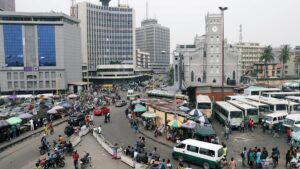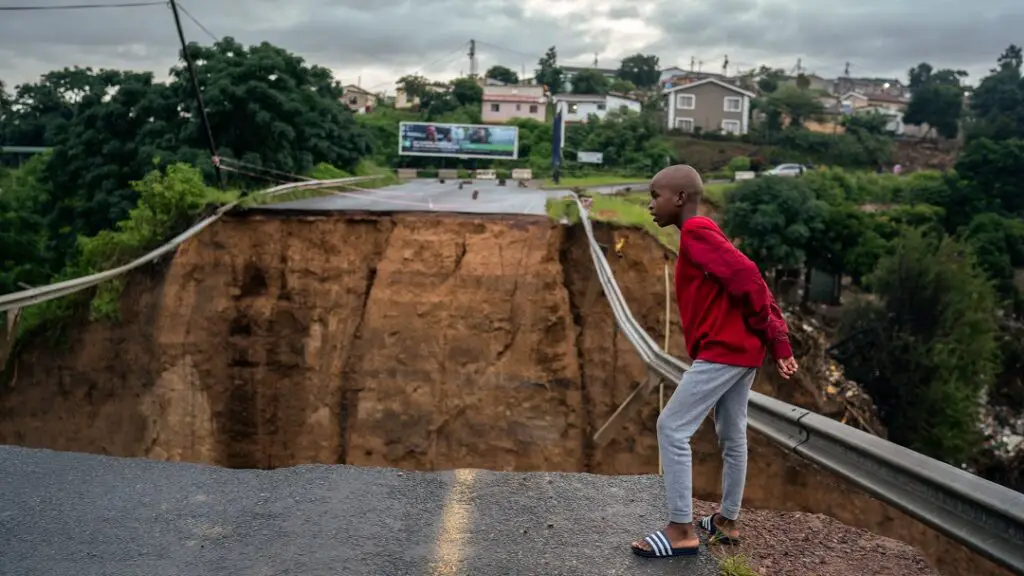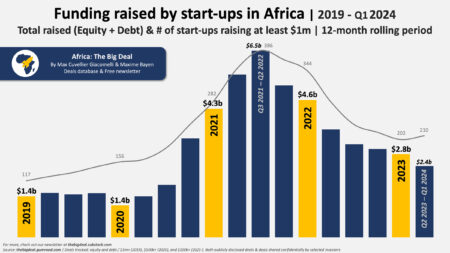- Last year, about 90 percent of climate change-related disaster losses in Africa were not insured.
- Global insurance broker Gallagher Re says affordability of premiums, quality of data, and technical capacity is hindering insurance uptake.
- DRC has appointed Gallagher Re to find ways to enhance the country’s insurance penetration rate in mining industry.
Climate change has led to an increase in the frequency and intensity of extreme weather events such as droughts, and floods in many parts of Africa. These extreme weather events are resulting in significant damage to property, infrastructure, and livelihoods.
Flooding induced by climate change
Last year, for instance, at least 2,000 people died in Africa as a result of unprecedented flooding, which was partly induced by climate change. South Africa (Durban) and Nigeria were particularly hit hard following above-average rains in the year under focus.
Storm Issa, which is now regarded as one of the greatest storms in South Africa’s history, led to the government declaring a national state of calamity. In just 24 hours, the Durban area received over 300 millimeters of rain. This caused landslides, overflowing riverbanks, and over 460 fatalities.
Overall, 12,000 homes were damaged, resulting in the displacement of 40,000 people in South Africa. Hospitals, schools, and other buildings also suffered huge damage. The torrents left Toyota factory and the Port of Durban grappling with supply chain challenges.
Investments in resilient infrastructure and insurance coverage for urban areas can help manage climate-related risks. Insured damages resulting from Storm Issa, which developed over South Africa’s central interior were estimated at $1.8 billion in April. Storm Issa led to significant amounts of precipitation in the Margate, Durban, Sezela, and Mt. Edgecome districts.
In 2022, the Horn of Africa nations of Kenya, Somalia, Ethiopia, and others experienced the worst drought in a decade. Over 30 million people in the Horn of Africa are in need of food aid because of the drought. The area has experienced nearly six failed rainy seasons. Due to the drought calamity, an estimated 7 million children are malnourished.
The great majority of these risks are uninsured. This is despite the frequency and severity of climate and disaster events growing globally and in Africa.
Climate change losses not covered
About 90 per cent of the losses caused by disasters in Africa were not insured. Across the world, approximately 61 per cent of the losses caused by disasters were not covered.
Antoine Bavandi, Global Head of Public Sector and Climate Resilience Solutions at international reinsurance broker Gallagher Re attributes the gap to a variety of country-specific problems.
“Major bottlenecks include premium affordability, data quality, technical capacity, poor understanding of insurance as a whole, or lack of a long-term vision on the climate resilience and risk finance agenda,” Antoine told The Exchange Africa in an interview.
In order to provide products that are uniquely adapted for each country, Gallagher Re’s Public Sector and Climate Resilience Solutions Practice is forging collaborations with governments, regulators, (re)insurers, and other stakeholders. The move will see public organizations and enterprises in Africa become financially resilient against the impact of disaster risks.
The Ministry of Finance of the Democratic Republic of the Congo (DRC) hired Gallagher Re to find ways to accelerate the mining industry’s insurance penetration rate. The deal is part of Gallagher Re’s initiatives in strengthening the resilience of public entities in Africa against the financial impacts of climate and disaster risks. The mining industry in the DRC is a significant force for regional economic expansion and long-term social progress. Natural resources abound in the DRC, especially minerals like copper, cobalt, diamonds, gold, tin, and coltan.
ANAPI promoting investments in DRC
The National Agency for the Promotion of Investments, or ANAPI, which stands for “Agence Nationale pour la Promotion des Investissements” is very important in promoting investments in the DRC, including in the mining industry. DRC has mineral reserves worth over $24 trillion.
“This advisory project is the beginning of a highly strategic collaboration with the Ministry of Finance for the development of a stronger (re)insurance and resilience industry in the DRC,” said Antoine Bavandi.
“We look forward to contributing to a stronger (re)insurance sector and to an improved business environment in line with DRC’s social and economic development plans.”
African Risk Capacity Limited (ARC Ltd) hired Gallagher Re in April of this year for the transfer of climate and food insecurity risks. ARC Ltd is a specialized insurer offering parametric insurance to African nations against natural disasters.
ARC Ltd’s ambitious growth plans foresee the combined use of traditional and alternative capacity providers as part of a unique risk carrier structure that aims to leverage the private sector for a wide range of resilience applications across Africa.
Managing disasters using early warning systems
Antoine claims that despite increased uncertainty related to climate change, remote sensing technologies and advancements in weather models today allow for a far better understanding of the materiality of risk.
Early warning systems, as well as risk reduction and mitigation more generally, are a great complement to insurance. Both can build on reliable risk modeling, giving governments, insurers, and politicians crucial tools to manage disaster costs.
According to Gallagher Re, these initiatives will incorporate both investments in resilience and disaster adaptation.
Read also: Severe drought in Horn of Africa pummels farmers and economies
Further, Senegal’s Public Solidarity Fund chose Gallagher Re in 2022. The plan is to build a comprehensive risk finance strategy for the financial management of climatic risks and food poverty. The collaboration will combine the best use of public funding and private market capital. At the moment, Senegal and other West African nations are facing the worst food crisis in ten years.
According to Gallagher Re, the situation necessitates creative solutions. Such initiatives will use public money while utilizing private market know-how and sovereign de-risking products.
Gallagher Re and Africa Re working together
In addition, Gallagher Re and Africa Re began working together last year to provide solutions like risk transfer to pay for emergency response costs after a crisis, national insurance programs for agriculture and crops, as well as weather derivatives and parametric products for the public infrastructure, energy, or tourism sectors.
Thirty-three of Nigeria’s 36 states experienced flooding and severe rain between June and November of last year. Despite being the country’s rainiest time of year, geography, climate change-related extreme weather contributed to significant damage. Poorly functioning dams (especially those close to the country’s borders) left populations vulnerable. Approximately 30 per cent of the destroyed properties had insurance.
According to Gallagher Re, public sectors will be able to invest in anticipatory or early warning systems if they have a better understanding of the frequency, intensity, and areas where catastrophes are most likely to occur.
In Nigeria, flooding and excessive rain left 1.67 million acres of cropland wasted. The disaster destroyed 180,000 homes according to Nigeria’s National Emergency Management Agency. However, insurance covered $750 million of the $4.5 billion in damages suffered.
Products designed for agricultural industry
Agriculture is a vital sector in many African countries. The industry employs a large portion of the population and contributing significantly to economies. However, the effects of climate change, such as erratic rainfall patterns, pose dangers to productivity. Farmers may, however, control these risks and safeguard their livelihoods with the help of insurance products designed for agriculture.
Insurance companies can create novel insurance policies that encourage the reduction of climate-related risks.
“We factor in the benefit of building dykes or levees on the overall risk profile of coastal areas, and in turn, on the insurance risk premium. This approach requires a comprehensive understanding of not just risk, but also opportunities and returns on investments offered by risk reduction and mitigation techniques,” Antoine explains.
Read also: Climate change, conflict exacerbating Nigeria’s food crisis
“In our view, this is the most cost-efficient and robust way of addressing the scale of the climate challenge and its potential socio-economic impact on businesses and livelihoods,” Antoine adds.
Nations are rethinking insurance by incorporating climate risk analysis and adaptation plans into insurance frameworks. This will support efficient resource allocation, informed decision-making, and the development of resilience to climate-related threats.
Financial impact of disaster and climate risks
Created in June 2022, Gallagher Re’s Public Sector and Climate Resilience assists in managing financial impact of climate risks. It targets governments, (re)insurers, banks, and businesses globally.
It focus is promoting financial readiness, de-risking techniques, and utilizing cutting-edge risk management technologies. Some of the technologies are weather derivatives and parametric products.
Additionally, the practice offers all-inclusive climate resilience and adaptation solutions, working with developed and developing economies to hasten the transition to a more sustainable development.
Rethinking insurance is essential to meet climate change-related risks since it presents substantial difficulties to Africa.
Africa can increase its adaptability to climate change, safeguard livelihoods, and promote sustainable development by creating creative and inclusive insurance solutions.











